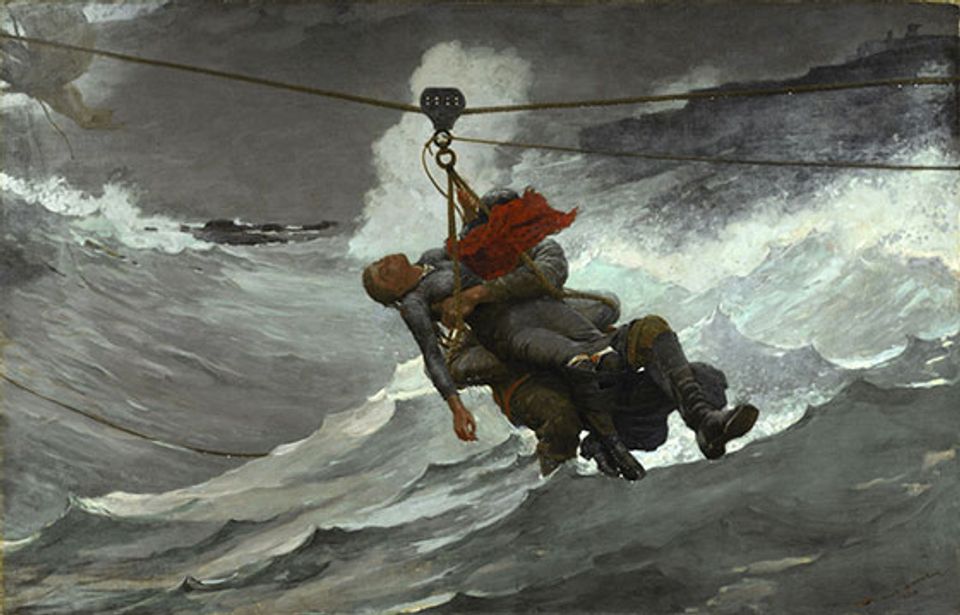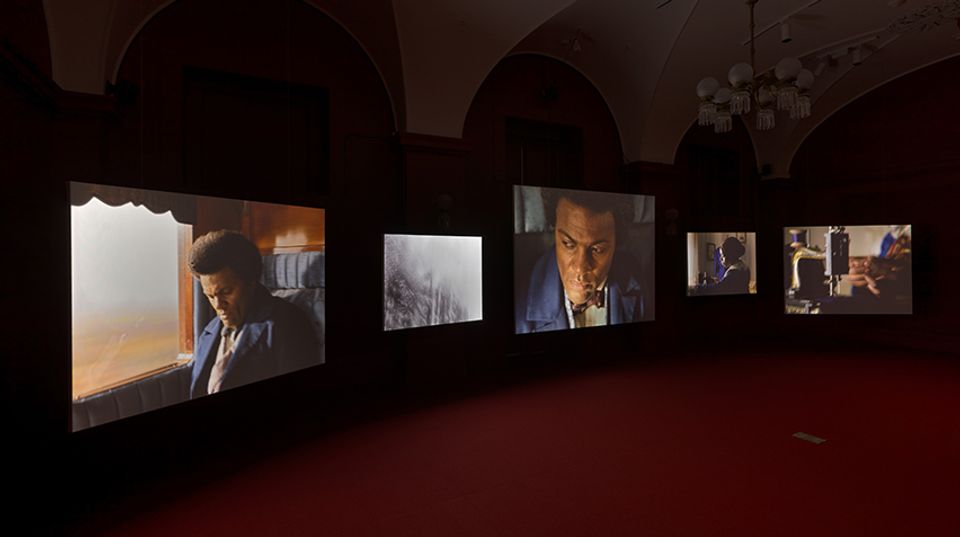

How does a curator unpack a painting, you may ask. Very carefully, of course. But if you're Kathleen A. Foster, senior curator of American Art and director of the Center for American Art at the Philadelphia Museum of Art, you also do it artfully, providing thought-provoking commentary along the way. Foster spoke the other evening at the McEvoy Auditorium, the third and final speaker in this year's Clarice Smith Distinguished Lecture in American Art series. Her focused talk concerned Winslow Homer's iconic painting from 1884, The Life Line. By spending more than one hour on the history and the mystery of a single painting, Foster not only revealed insights into the workings of the artist, but also themes very much on the minds of Homer and his contemporaries.
In the mid- to late nineteenth century, the turbulent ocean brought people from overseas to the United States. Unfortunately, not everybody survived the passage. Shipwrecks were front-page news stories, then and now. (Think of the recent Costa Concordia, shipwrecked off the coast of Italy in 2012.) In Homer's closely cropped work, a nearly drowned woman is rescued by a new type of American hero in a contraption known as a breeches buoy, what we might consider a kind of zip line today. In its day, it was the height of new technology, more Sony Walkman than iPod, but apparently it did the trick.
The painting, displaying the themes of heroism and romance, against the overlay of man verses nature, picks up on the ideas of the roles of men and women in society. Foster shared with us the history of such images in painting and literature (and even a contemporary ad from Target) to show us not just Homer's time, but ideas that have come down to us as well. The painting became a turning point in Homer's career and is considered an important part of his oeuvre.
If you missed Foster's talk, watch our webcast. Bonus points if you can keep score of all the nautical references in her talk.

















